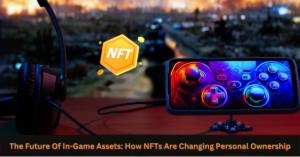Decentralized Finance, or DeFi, flips the conventional financial system on its head. It uses blockchain technology to remove intermediaries, like banks or brokers, from financial transactions. Imagine transferring money, securing a loan, or earning interest on your savings without stepping foot in a bank. That’s DeFi, and it changes the way we think about financial accessibility and control.
Traditionally, handling your finances means dealing with a maze of complex processes and institutions. DeFi opens direct paths, offering transparency and efficiency. It gives more people power over their financial lives, particularly benefiting those without access to mainstream banking services. This aspect of inclusivity makes DeFi revolutionary.
As of now, the DeFi space is buzzing with innovation and experimentation. Developers and entrepreneurs are constantly cooking up new applications that expand what’s possible in finance. From lending platforms to insurance and beyond, DeFi applications aim to broaden financial opportunities for everyone worldwide. The rapid growth and diversification signal a strong future for decentralized finance.
This initial overview of DeFi gives a taste of what’s happening in digital finance. The coming years promise not just to expand the technology but redefine financial norms entirely. Stay tuned, because the world of DeFi is just getting started.
Uniswap: Pioneering Decentralized Exchanges
Uniswap has become a go-to name when exploring decentralized exchanges in the DeFi space. It swaps traditional order books for an Automated Market Maker (AMM) model, which allows users to trade cryptocurrencies directly from their wallets. This innovation not only enhances efficiency but also simplifies the trading process.
With Uniswap, providing liquidity becomes more accessible to anyone holding cryptocurrencies. Participants can contribute to liquidity pools and earn transaction fees in return. It’s a way to put idle crypto assets to work and play a part in a broader financial ecosystem that operates round the clock, free from the constraints of traditional market hours.
Uniswap’s design promotes decentralized trading, making it a critical piece in the global DeFi puzzle. It’s played a substantial role in boosting DeFi adoption by making trading easy and open to a broader user base. This democratization of trading has spurred many new users to test and trust decentralized systems.
Looking forward, Uniswap isn’t resting. The team behind it frequently updates the protocol, introducing features that address user feedback and push technical boundaries. Keeping abreast of these changes ensures that you’re leveraging the latest capabilities. That’s why being informed about Uniswap’s trajectory can offer strategic advantages as we move toward 2025.
Aave: The Future of Decentralized Lending and Borrowing
Aave stands out in the DeFi landscape by revolutionizing how lending and borrowing work in the digital world. Without the need for traditional banks, Aave offers a platform where users can lend their cryptocurrencies to others and earn interest or borrow against their crypto holdings with more flexibility than conventional loans.
One of Aave’s standout features is its Flash Loans. These are loans that can be borrowed and repaid in a single transaction, opening doors to new financial strategies like arbitrage and refinancing, which can be complex but profitable for those who understand them. Flash Loans intrigue power users looking to optimize their financial activities dynamically.
Aave’s governance model gives power back to the community. With AAVE tokens, users can propose and vote on changes to the protocol, embodying a true decentralized spirit that many DeFi enthusiasts seek. This user-centric approach fosters a more engaged and participatory community, crucial for long-term success and innovation.
Looking ahead, Aave’s potential is significant, but it’s not without hurdles. The regulatory environment remains uncertain, and adapting to these changes will be key to maintaining growth. Staying informed on regulatory trends and their implications on platforms like Aave can prepare users to navigate and leverage these avenues effectively as the DeFi sector matures toward 2025.
Compound: Innovating Interest Earning on Crypto Assets
Diving into the world of DeFi, Compound emerges as a leader in revolutionizing how people earn interest on their crypto holdings. By allowing you to lend your digital assets, Compound generates returns without the complicated processes associated with traditional banking systems.
The beauty of Compound lies in its autonomous nature, letting users interact directly with the protocol to earn or accrue interest. There’s a sense of empowerment that comes with having control over your financial maneuvers, free from the middle-men that often dominate the traditional finance space.
Central to Compound’s operation is the COMP token, which enables holders to influence the protocol’s development. This decentralized governance model ensures that users have a say in the ecosystem’s evolution, a democratic approach that aligns with the broader DeFi ethos.
Balancing security and innovation are critical for platforms like Compound. As with any DeFi project, safeguarding assets is paramount to building trust. Being proactive about security measures and staying educated on best practices can help users protect their investments as they explore opportunities within Compound and similar platforms.
2025 and beyond could see Compound enhancing its ecosystem, possibly integrating new financial tools and expanding its reach. Keeping abreast of these developments will be crucial for anyone looking to engage with DeFi, ensuring that they maximize their financial strategies within this dynamic landscape.













